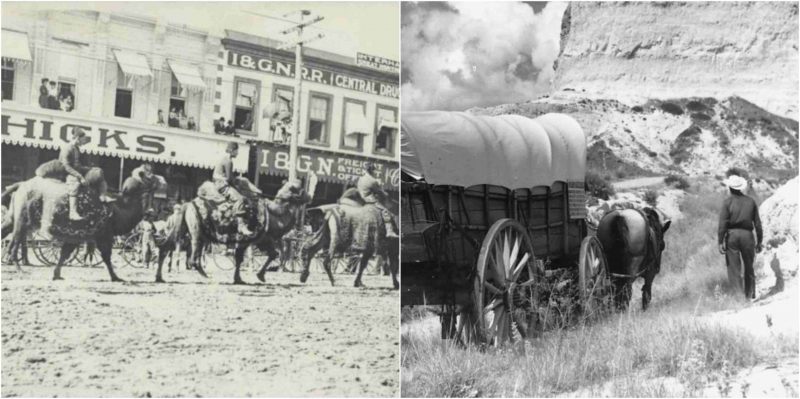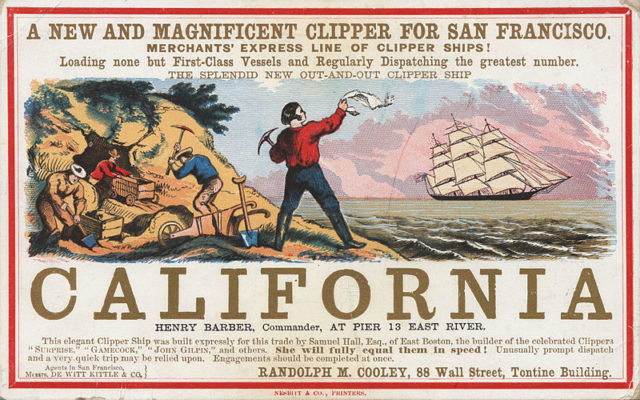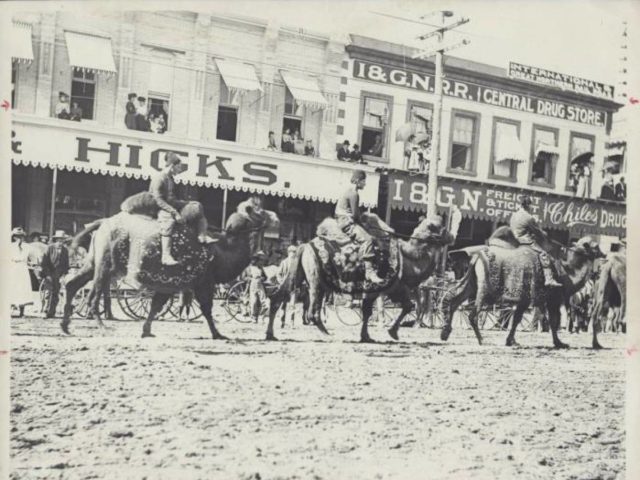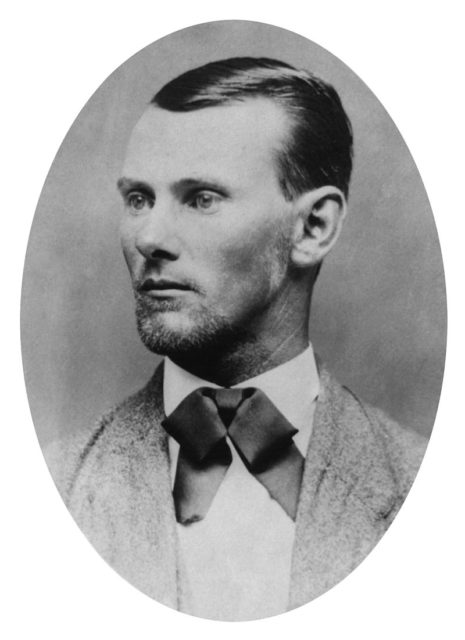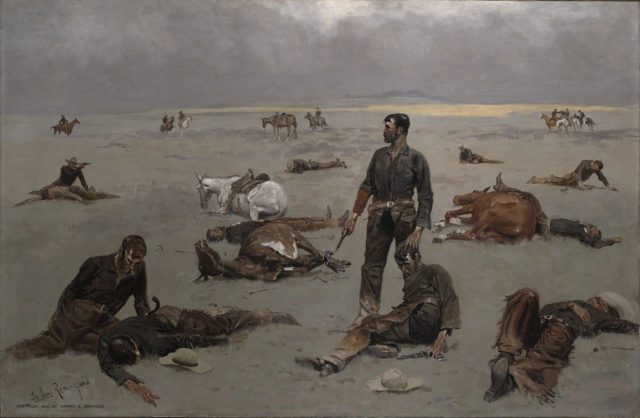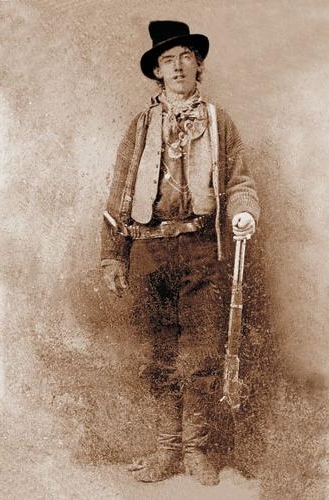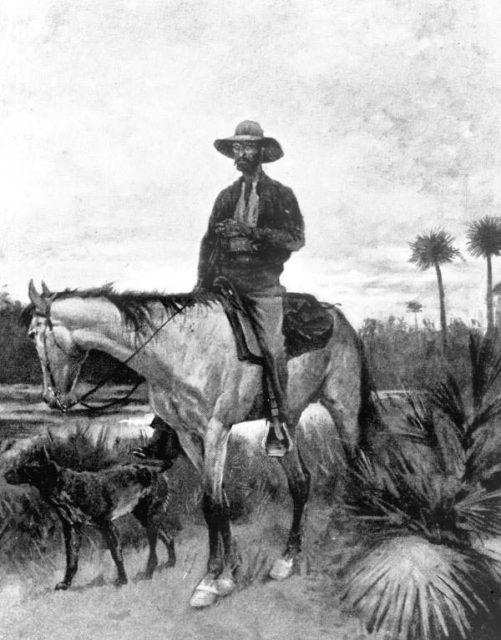When asked to picture the Wild West, most people are likely to call up a scene from a Hollywood movie—gun-slinging cowboys, crazy shootouts, and nefarious villains. The real American West, however, was not nearly so exciting or violent as the big screen portrayal. In fact, there are many facets of the Wild West that are incorrectly represented in our media. Below are ten such facets that many of you may have misconceptions about.
-
Traffic jams were common in the Plains.
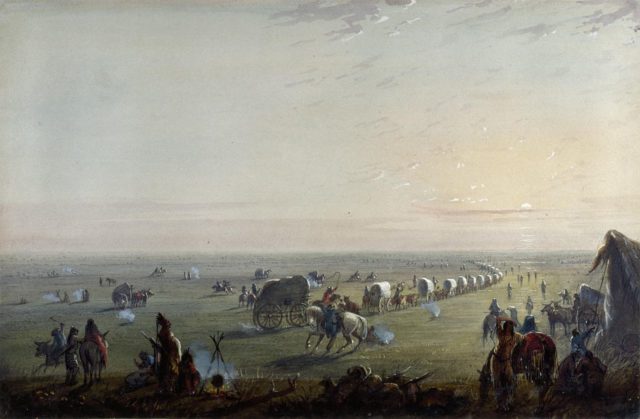
source
There was a massive influx of settlers into the Wild West, so it makes sense that one of the biggest issues they had to deal with was traffic. People would often travel in large groups—packs of wagons would stretch as far as the eye could see. If you were at the front of the pack, it wasn’t a problem, but the people in the back had to deal with several obstacles. The Plains were dusty, and the front wagons would kick up this dust. This was such a problem that people in the back wagons had to wear special goggles to protect their eyes. Another issue was grazing. The animals located in the front could graze freely, but by the time the animals in the back got to the same area, all the plants would have been eaten. Thus, the horses and livestock had nothing to eat. Lastly, the people in the front would set up latrines—everyone has to go at some point—but these were often poorly constructed and would contaminate the water supply of those who followed.
-
California was not the site of the first Gold Rush.
Most history books will claim that 1848 and 1849 are the years that the Gold Rush started, but in fact, gold had already caused a stir elsewhere. Large gold deposits had been found in North Carolina and Georgia several years prior to the ones found in California. In 1799, a young North Carolina boy found a seventeen-pound gold nugget. Interestingly, neither he nor his family knew that it was gold and used the nugget as a doorstop until someone bought it for $3.60. A gold rush in 1828 occurred in the hills of Georgia. When gold was discovered in California, people who had struck out in North Carolina and Georgia made their way West for another chance.
-
Camels roamed the West.
Camels are probably not the first thing to come to mind when thinking about the Wild West, but there were hundreds of feral camels wandering around the Southwest United States. The reason for their presence was an experiment conducted by the U.S. government in the 1850’s. In 1855, Congress gave $30,000 to the Army so that they could buy and ship camels from Egypt to the U.S. The idea was that the camels would do better than horses in the hot desert climate. The experiment was actually pretty successful—until the Civil War broke out. After the start of the war, many of the camels escaped and started breeding. They were incorporated into the wild landscape. Then, in the 1940’s, the camels population dwindled out, which is why we don’t see them today.
-
Jesse James was really not a good guy.
In his time, Jesse James was heralded by the newspapers as a Robin Hood type figure who robbed the rich and gave to the poor. This is largely contrary to the truth. The reality is that Jesse James was friends with John Newman Edwards. The two exchanged letters frequently and became close friends. Edwards wrote for the pro-Confederate paper in Missouri and would defend James, claiming he was a hero and painting him in a more positive light.
-
There were relatively low rates of violence.
This might disillusion some people, but it is true. Despite Hollywood using violence as a common thread in almost all Western movies, the Wild West wasn’t really that wild. Bank robberies were basically unheard of. Most Western communities were tightly knit, and since there were so few laws in place, people were more inclined to make friends with their neighbors than make enemies of them. The homicide rate was fairly low—large areas such as Dodge City and Wichita had a murder rate of 0.6 per year, for example. Many historians actually believe that the world today is much more violent than it was back then.
-
Gun control was common.
While braving the Wild West, a gun was pretty much a necessity. Wild animals and lawless bandits could be fought off with a gun, so many people carried. That being said, however, the gun control laws of the time were much stricter than they are today. In many cities, people were encouraged to leave their gun with the sheriff in return for a check. People were allowed to have guns, but it was highly discouraged for people to bring them out in public. Interestingly, one of the first laws passed in Dodge City was a gun control law, while several other frontier towns simply banned carrying guns openly.
-
Wild West outlaws weren’t that tough.
Many of us are familiar with the names Billy the Kid or Wild Bill Hickok and most of us know the incredible stories that they feature in. But that’s the thing—they are just stories. Many of these outlaws shaped their reputations with fiction. Buffalo Bill, for example, when he started touring the Wild West, performing plays, he hired Wild Bill—only to promptly fire him for talking in a feminine voice. Jesse James used press releases that he left at the scenes of his robberies to establish his reputation, and Billy the Kid’s body count was much lower in reality. He might claim to have killed twenty people, but only killed four.
-
No one wore cowboy hats.
In the movies, there are two staples in the Old West wardrobe: cowboy boots and cowboy hats. They really did wear the boots, but the cowboy hats we associate with the Wild West didn’t come into style until 1865 when John Stetson invented them. Cowboys actually wore bowler hats. This type of hat was considered the most appropriate and versatile hat for all kinds of social situations. Although common, bowler hats weren’t the only style to be worn. Other popular hats were the wide-brimmed pancake hats and the floppy top hats.
9. Prostitutes were shunned.
Hollywood movies often depict saloons full of working girls who all seem to have been accepted into the society of the time. The music would be playing loudly while men and women flirt at the bar. Sadly, this was hardly the case in reality. Prostitutes in the Old West were considered to be on the very bottom rung of society. Photos of the working girls would be printed in local papers in order to shame them, and editorials sometimes suggested that the girls should commit suicide by taking morphine or strychnine. This belief was so rampant that at one time, suicide was thought to be the only way out of prostitution in the West. Frontier communities, being isolated and mostly self-sufficient, didn’t offer any type of social services. Usually the church was the only source of charity in a town, and they certainly did not want anything to do with prostitutes.
10. Water was almost as valuable as gold.
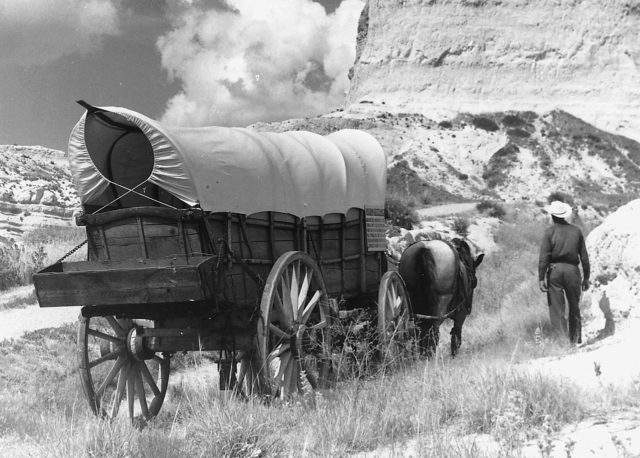
For travelers in the West, water was a valuable commodity. Whereas bacon cost a measly penny, water cost between one dollar and 100 dollars. Californian businessmen would even travel out to points on the Oregon Trail and sell overpriced water to desperate settlers. At times, this meant that water was sold at the same price as gold. This lack of water not only affected people’s thirst. the lack of water meant that few people could afford to take a bath. This is the reason that cowboys and frontiersmen became known for being extremely smelly. When first contact between the settlers and the Native Americans occurred, the tribes were often shocked and appalled by how uncivilized and smelly the settlers appeared.
